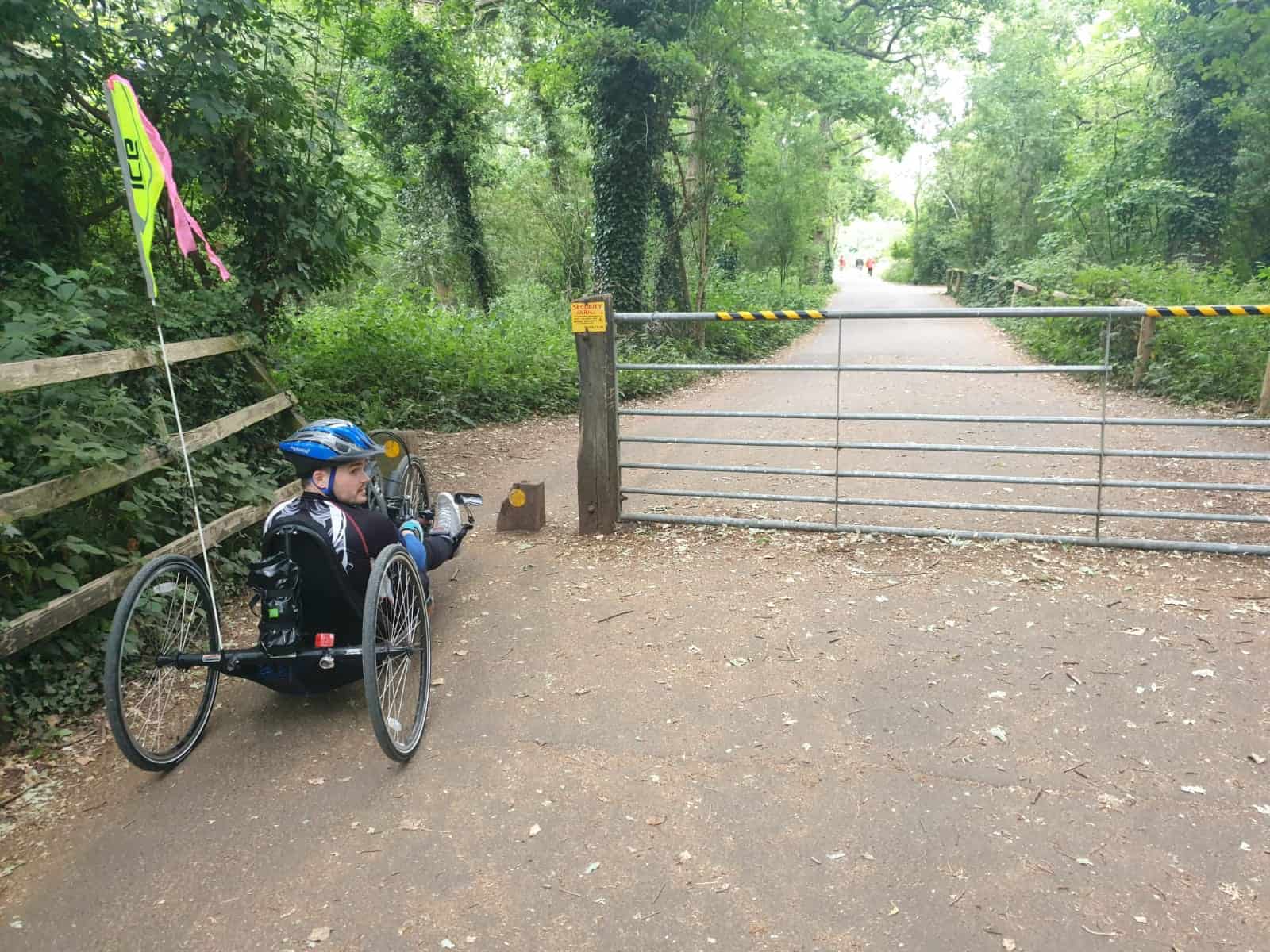Rick has been involved with Wheels for Wellbeing for over a decade, starting as a client in the early days of his Disability and quickly moving on to become an ambassador and then a Trustee for the charity for a number of years. His work as a professional cheerleader and the founder of his own inclusive charity, ParaCheer International CIO, meant he had to step down from the Board, but he still keeps in regular contact with and supports Wheels for Wellbeing whenever he can. At the start of lockdown he borrowed our Varna 2 Handcycle and enjoyed it so much that he went and bought his own cycle! Here’s Rick’s lockdown cycling story:
“I’d cycled with Wheels for Wellbeing, but didn’t have my own cycle – I thought that it would be too difficult to store a hand-trike at home, and that I wouldn’t be able to afford one. When lockdown started, I rented a cycle from Wheels, and found that although it was a little awkward there was space to fit it in my hallway at home. Because I was working from home, I was saving money on my commute (and my weekly takeaway being closed helped save money too!), and when I found someone was selling a hand-trike for a reasonable price, I quickly brought my own. Really, it was a lucky coincidence that someone was selling one just when I had the money for it and realised I could keep it at home.
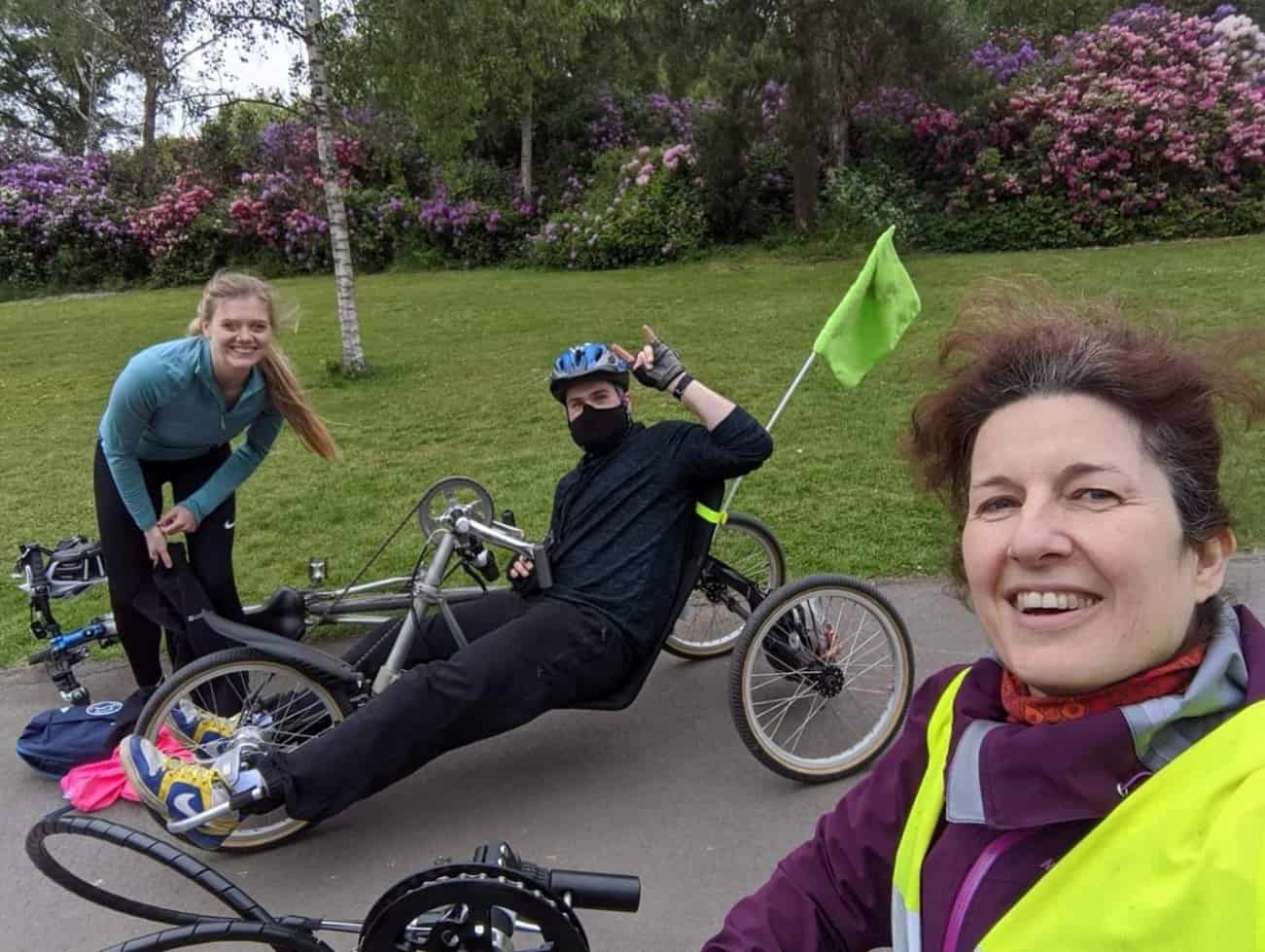
Cycling has been so important for me during lockdown. I’d cycled before and enjoyed it, but I’m definitely cycling loads more now. It’s allowed me to stay fit, has been a good alternative to weights in the gym for my arms, and is a great cardio workout – it can be hard to do cardio when you use a wheelchair especially when the swimming pools are closed. Keeping fit is crucial for me, as I work as a cheerleader. It’s also been great for my mental health. If I’d been stuck at home all the time, or only able to go out for a walk in my wheelchair, I’d definitely have got really depressed, but going for a cycle means I can go further and faster and actually feel like I’ve been somewhere. I’ve been able to go and see friends while social distancing – we can chat from the garden or a window – and the challenge of the cycle journey there and back becomes part of the trip out. I can go and see my Mum or make a trip out to central London to look at the sights in a new way; it’s so much better than just a slow push round the local park. I go out with my partner, and we hope to work up to a trip to see her parents (an 80-mile round trip – we’re currently getting up to 25 miles, so we’re not quite there yet)!
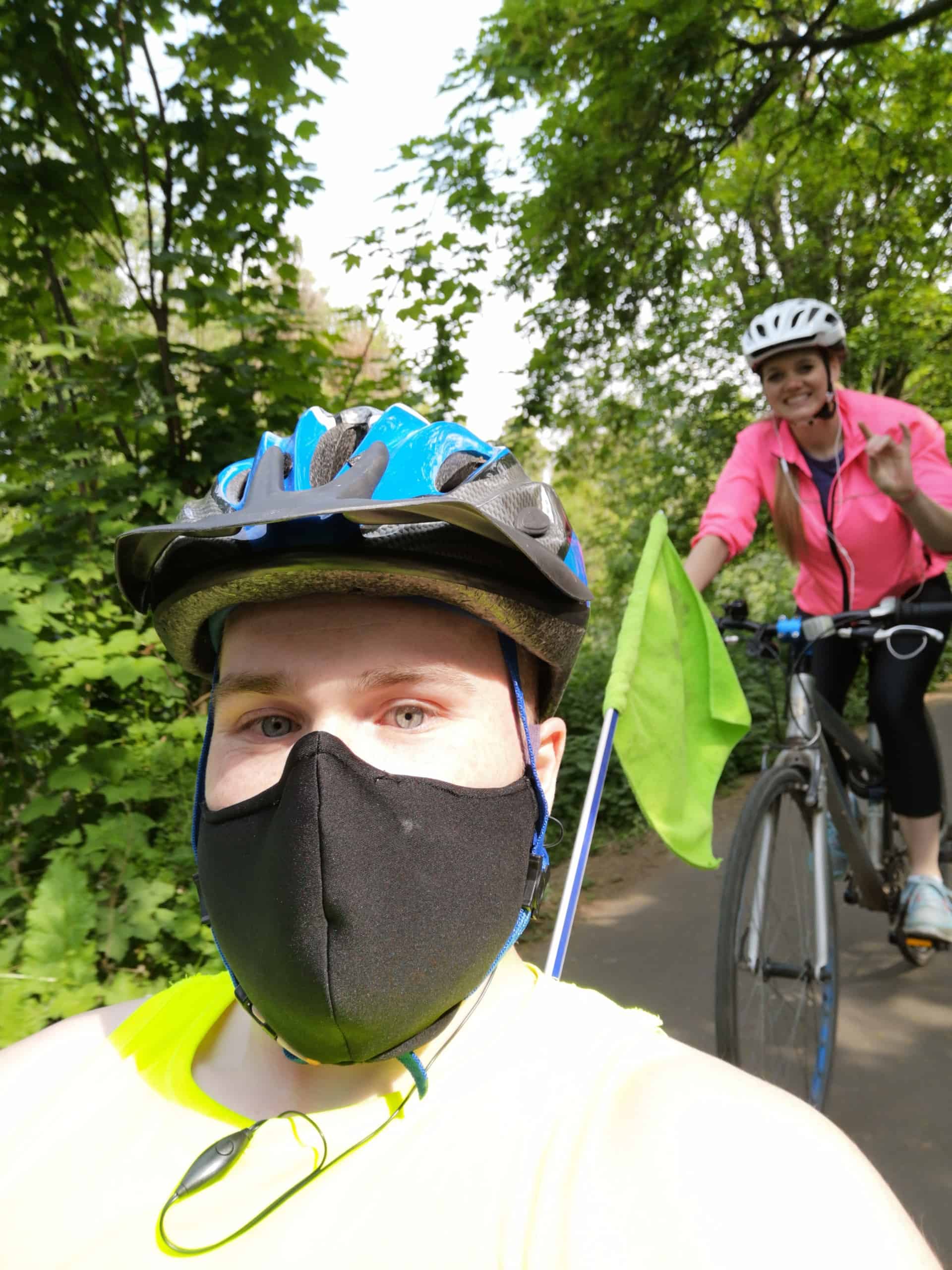
Cycling in lockdown has also made me more aware of the importance of Wheels for Wellbeing’s campaigns for better accessibility. Obviously I knew about it, but it’s not until you suddenly find that you can’t get your cycle down a cycle path because it’s not wide enough or has bollards that block my tirke that you realise why it’s so important. The more I cycle, the more I find places I can’t get through. But it’s not just cycle paths – we need more recognition generally. I’ve got a problem with one of the gears on my trike, which is really frustrating, but I can’t get it fixed at a bike shop. It’s a standard Shimano gear, and shouldn’t be a problem, but the mechanics there won’t touch it as my cycle doesn’t look like a standard bike. They’d fix it if it was on my partner’s bike, but not on mine just because it looks different, even though the gear mechanism is the same.
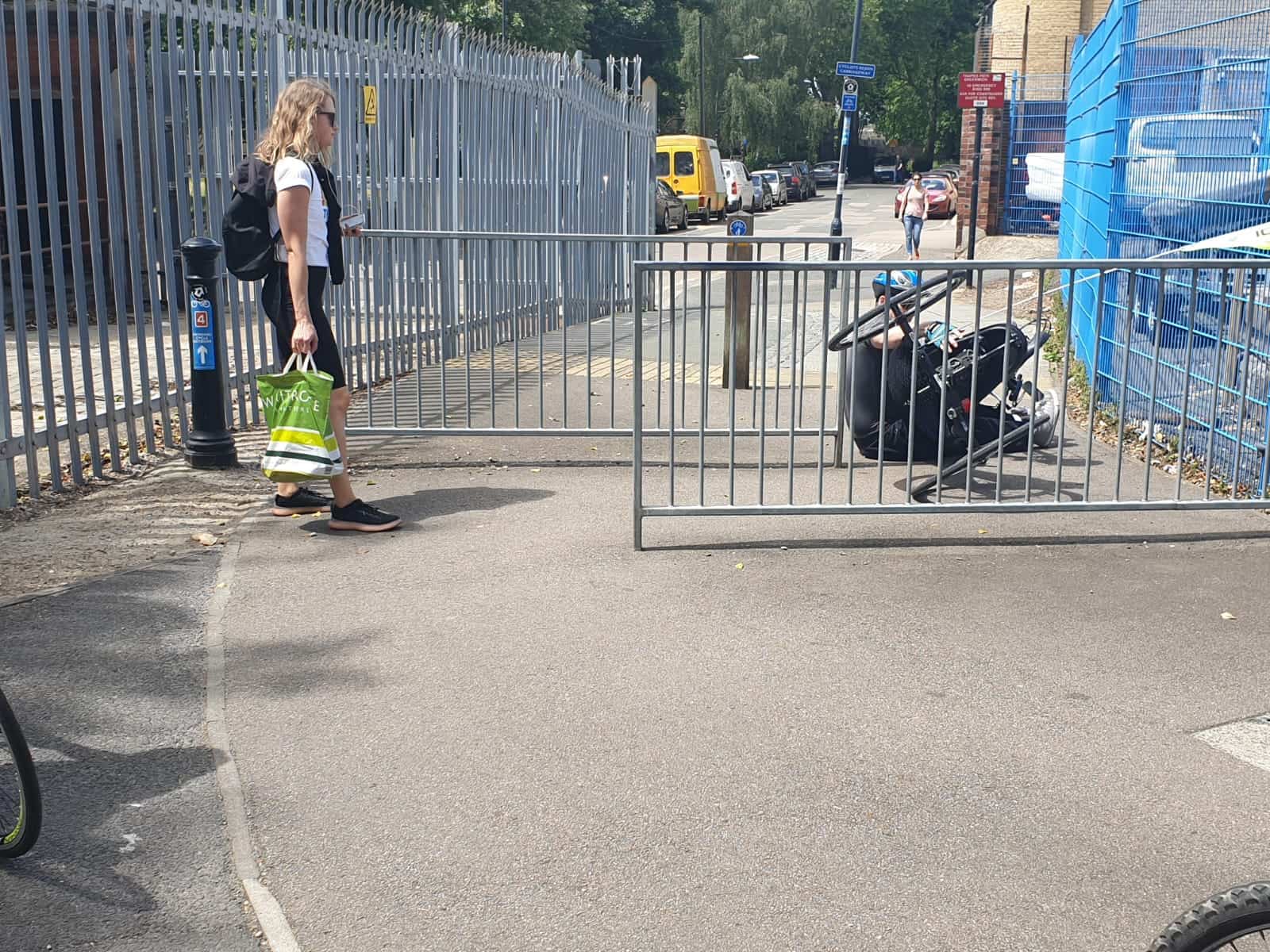
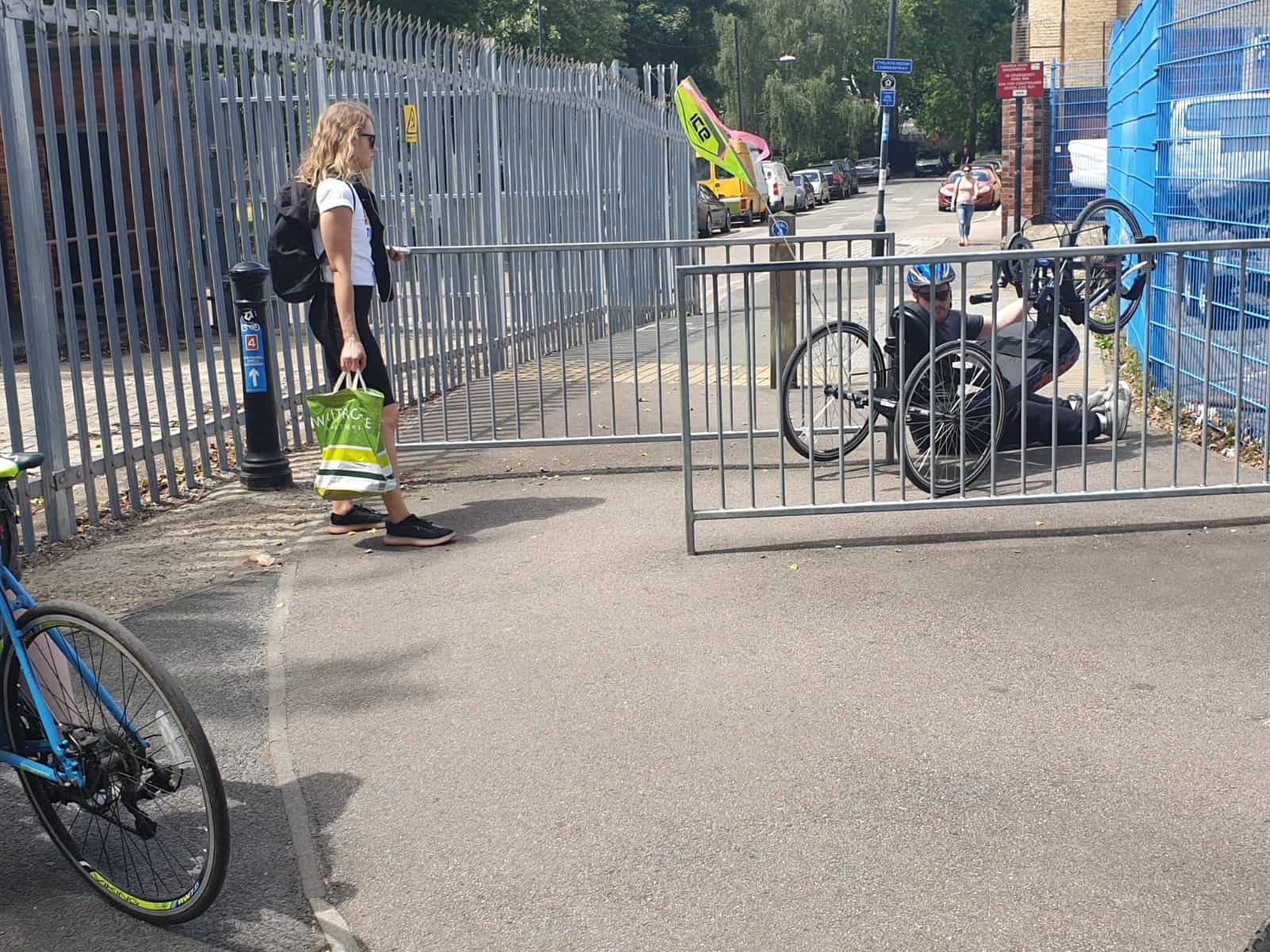
Where I live there doesn’t seem to be many new temporary cycle lanes or much infrastructure to make the roads safer, but I’ve seen some in Croydon where my Mum lives. It’s not very good – the bane of my Mum’s life, to be honest! They’ve blocked off a road just outside her house, but it’s not clearly signed so people keep trying to drive down the road, still go too fast, then have to turn round – using her driveway – and speed off back up it again. I think it annoys people, so they drive faster, so the roads aren’t actually any safer. There are also some extra blocks on the road I take to get to my Mum’s place, which means that I can’t cycle through and have to go on the pavement. I think it does make it harder for some Disabled people, and it can be a bit random, like when they widen only one side of the road but leave the other side as it is. It’s a bit typical of the government, really – they try and solve one issue and just create another. As usual it would have been a lot better done if all stake holders were consulted rather than just the average consumer.”
